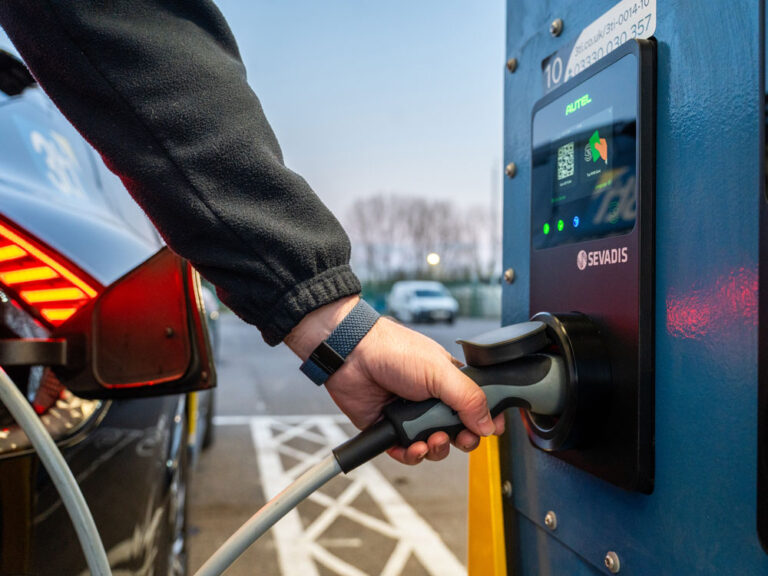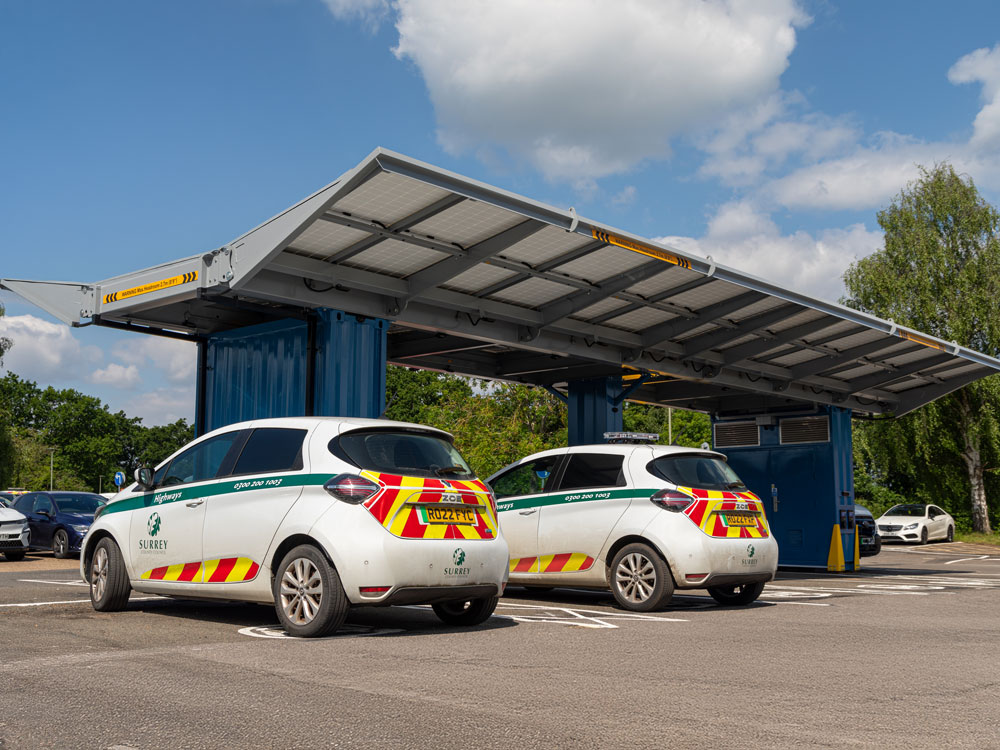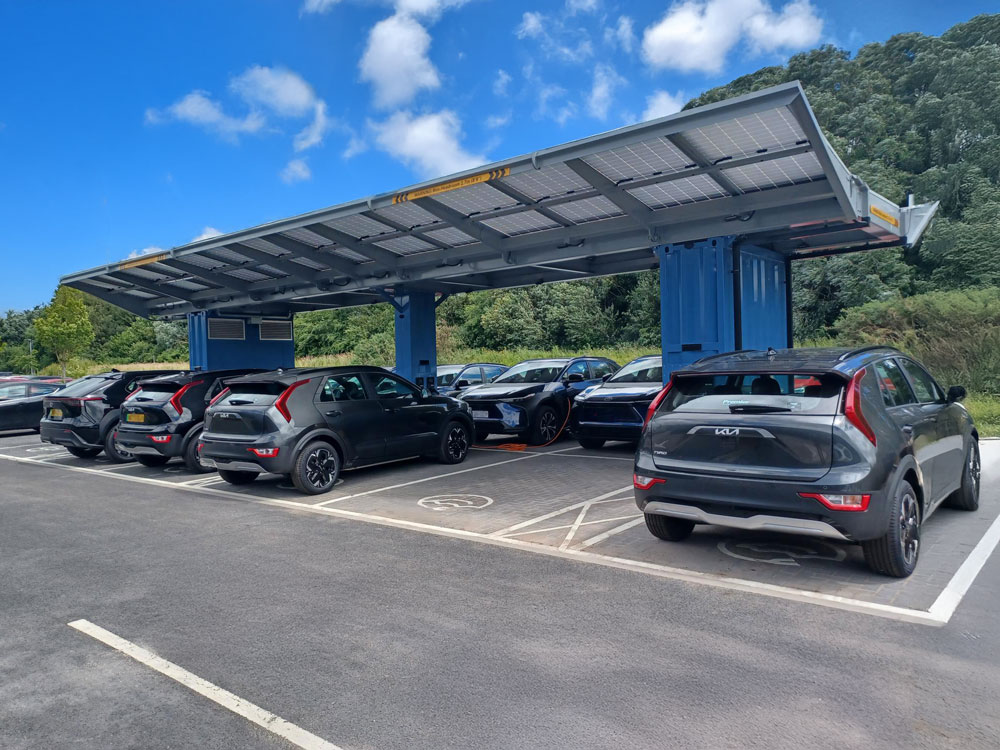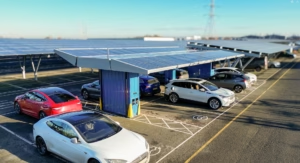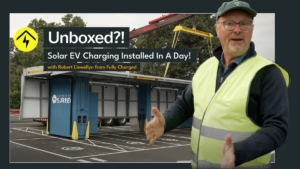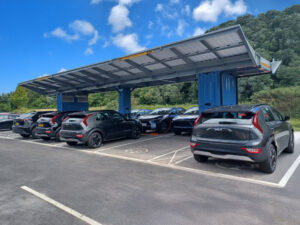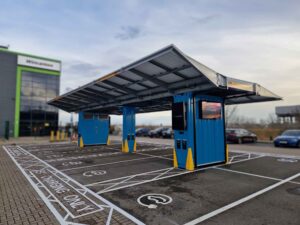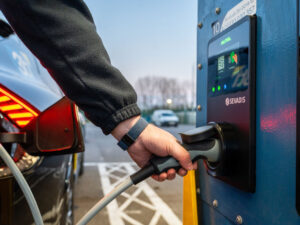The UK’s transition to electric vehicles is gaining momentum, but our EV charging infrastructure still lags behind. While the government’s shift in funding from plug-in grants to public charging is welcome, investing solely in rapid chargers at service stations risks missing the bigger picture.
Most Cars Are Parked – That’s When They Should Charge
The reality is simple: most EVs are parked 95% of the time. That’s when they should be charging.
Rather than encouraging drivers to stop and pay a premium at forecourts, we should be scaling up workplace and destination EV charging — where vehicles are already parked for hours. Think office car parks, retail centres, gyms, campuses, or tourist destinations.
By charging during natural dwell time, drivers benefit from:
- Lower-cost energy
- Reduced grid strain
- Lower carbon emissions, especially when paired with on-site solar power
The Problem With a Forecourt-First Mindset
Relying on rapid charging alone is problematic:
- It pushes charging to peak times, when electricity is more expensive and carbon-intensive
- It creates a two-tier EV ownership system: nearly 50% of UK households can’t charge at home, leaving them reliant on expensive public options
- It worsens grid congestion by funnelling demand into high-load, centralised locations
The Smarter Approach: Workplace and Destination EV Charging
Papilio3 — 3ti’s solar-supplemented EV charging hub — is designed for destinations, workplaces, and fleet depots. It delivers:
- 12 x 22 kW AC charge points, perfect for overnight or all-day charging
- On-site solar energy generation (18 MWh/year average)
- Optional battery storage for peak demand management
- Installation in under a day, with no grid upgrade required
It’s a scalable and sustainable solution that aligns with how people actually use their vehicles.
Better for Drivers, Better for Businesses
A shift toward workplace and destination EV charging isn’t just good for the grid — it’s good for business:
- Employee EV charging supports ESG goals, retention, and green credentials
- Retail and leisure destinations benefit from longer dwell times and customer satisfaction
- Fleet depots gain resilience and control, without waiting years for costly grid upgrades
And unlike frequent rapid charging, 11–22 kW charging is gentler on EV batteries — improving long-term battery health and vehicle value.
Rapid Charging Has a Place — But It’s Not the Foundation
Rapid chargers are essential for occasional top-ups on long journeys, but they shouldn’t be the core of the UK’s EV infrastructure.
For daily use, the answer is clear: charge where you stop. It’s more affordable, efficient, and sustainable for drivers, businesses, and the national energy network.
Let’s Build Charging Infrastructure That Reflects Real Behaviour
If we’re serious about meeting the 2030 ICE ban and 2050 net zero goals, we need an infrastructure strategy that matches how people live, work, and travel.
That means more solar-powered workplace and destination EV charging, and fewer assumptions that every driver should stop to charge at a motorway forecourt.
📽️ Related: Watch how Papilio3 supports workplace EV charging at Bentley Motors →
📩 Want to explore EV charging for your business or destination? Talk to the 3ti team →

